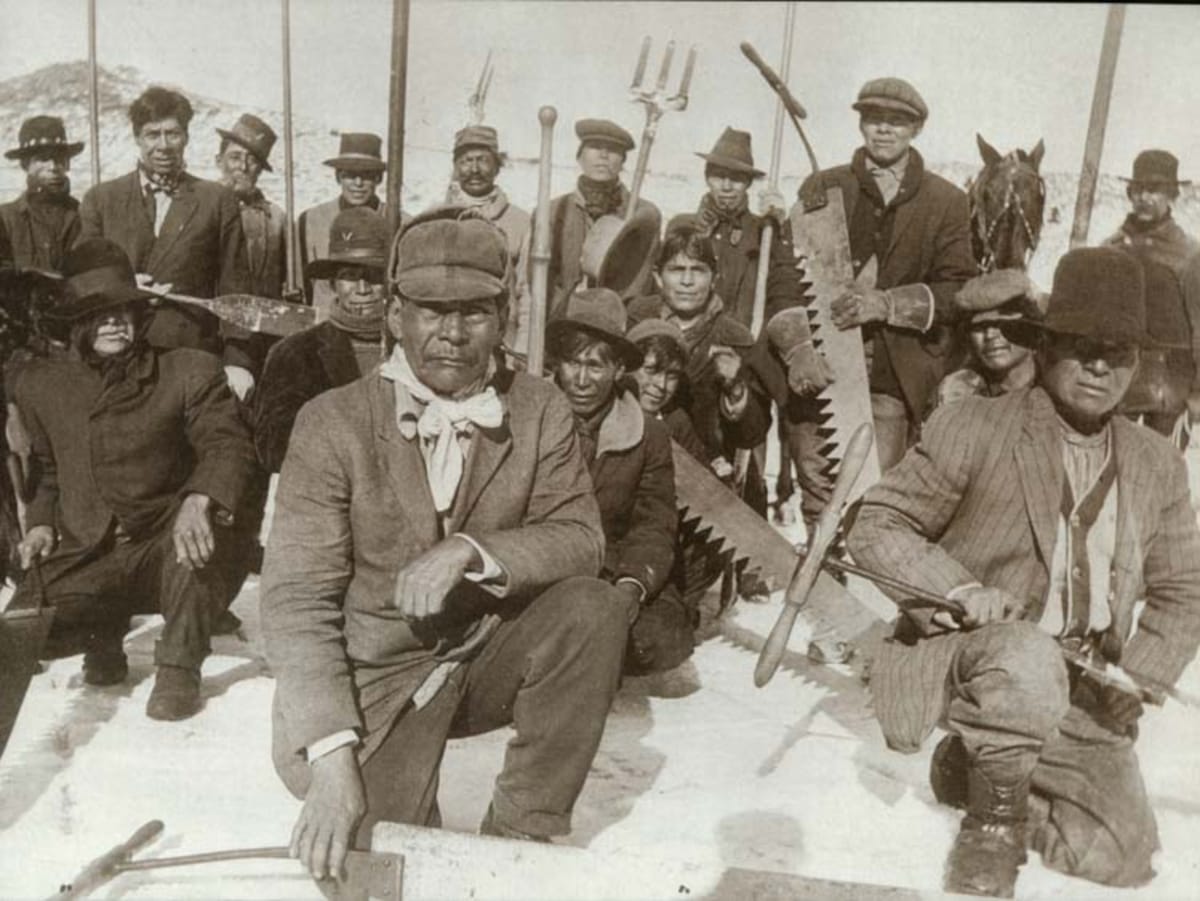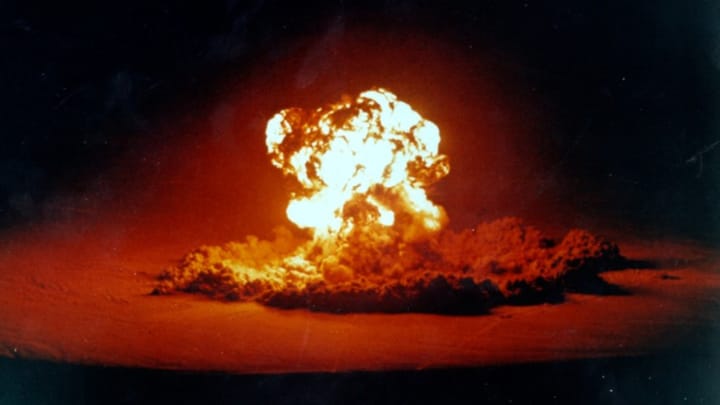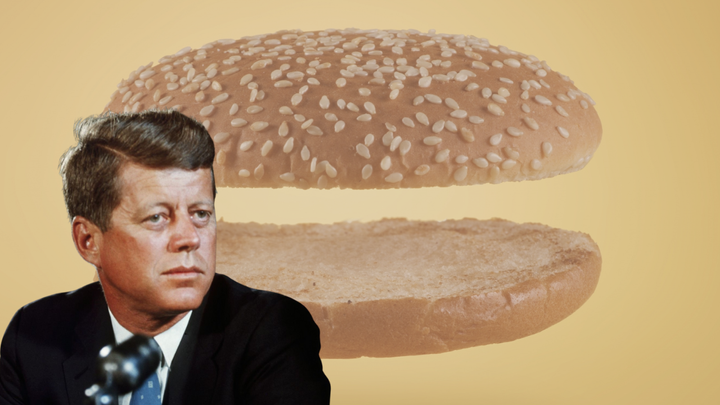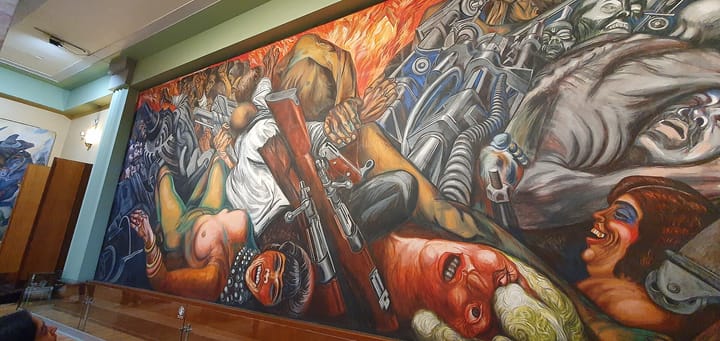Historic Photo: Native American ice-cutting crew in winter, 1880s.
If you wanted ice cream in the Victorian era, you had people like this to thank for it.

Today, at the end of January, at least where I live we’re expecting very cold temperatures and perhaps snow or ice precipitation in the next few days. That makes this entry in the ongoing Historic Photo series timely. (It seems like this winter has already gone on forever). In years past for many people winter meant business—specifically, ice-cutters. This is a group of ice-cutters, Paiute Indians, posing with their tools before setting to work on the Divide Reservoir near Virginia City, Nevada. The picture isn’t precisely dated, but it’s probably about 1880. Note their heavy-duty saws, picks and other tools; the horse that’s probably going to be pulling the ice sled barely managed to get into the picture at the upper right.
This was indeed a business, and a fairly lucrative one. In the depths of winter ice-cutters would go to frozen lakes and water sources, cut as much of the ice as they could into rectangular blocks, haul them to a warehouse (often on sleighs) and hoard them in a barn or other storage space for months until the demand for ice arrived with warmer weather. In the era before mechanical refrigeration, this practice was the only way you could get ice cream, iced tea or refrigerate food in your houses—thus, ice-cutters were extremely important workers. There’s also a class dimension here. Ice and cold delectables were the food of the rich in the 19th century, but ice cutters were working class. They worked in winter so rich people could have ice cream in spring and summer.
Doing my YouTube channel, I’ve found there are some popular misconceptions about ice and cold foods in the past. Many people assume things like ice cream were technically impossible to achieve before mechanical refrigeration. (Many also assume mechanical refrigeration came in much later than it really did). For example, in my video on “The Fall of the Monarchies,” at one point I mention a Russian diplomat who turns his nose up at the food served at Teddy Roosevelt’s upstate New York estate during the 1905 negotiations to end the Russo-Japanese war—the menu included ice water. Some people have commented that they don’t think people could have had ice water in 1905. Trust me, they did, and it’s because of people like those pictured here.
The practice of ice-cutting died out beginning in the 1920s, but there seem to have been some old-fashioned ice-cutters still around as late as the 1950s, before rising wages and consumer abundance made refrigerators ubiquitous. This may sound like a detail of history, but the transition from ice-cutting to mechanical refrigeration had profound implications for how people, especially Americans, chose, cooked and ate their food. A very interesting book on the history of food, which includes extensive material on the ice-to-refrigeration transition, is Fresh: A Perishable History by Susanne Friedberg.
Stay warm this weekend!
The Value Proposition
Why should you be reading this blog, or receiving it as a newsletter? This is why.
☕ If you appreciate what I do, buy me a virtual coffee from time-to-time to support my work. I know it seems small, but it truly helps.
📖 You could also buy my newest book.
🎓 Like learning? Find out what courses I’m currently offering at my website.
📽 More the visual type? Here is my YouTube channel with tons of free history videos.



Comments ()